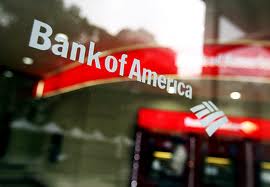 (Bloomberg) -- Bank of America Corp., whose home-equity mortgage portfolio exceeds its stock market value, probably will say about $2 billion of junior loans are bad assets tomorrow even as some borrowers are still paying on time.
(Bloomberg) -- Bank of America Corp., whose home-equity mortgage portfolio exceeds its stock market value, probably will say about $2 billion of junior loans are bad assets tomorrow even as some borrowers are still paying on time.
That’s what Barclays Capital estimates the bank will report in its first-quarter results, following decisions by JPMorgan Chase & Co., Wells Fargo & Co. (WFC) and Citigroup Inc. to reclassify $4.1 billion of junior liens as nonperforming.
Regulators are pressing for the change on concern that falling home prices have wiped out collateral on many second mortgages, leaving them as unsecured debt. About 20 percent of the nation’s $845 billion of home-equity loans exceed the value of the properties when combined with primary mortgages, according to CoreLogic Inc., and about 36 percent of Bank of America’s were at least partly “underwater” at the end of last year, according to regulatory filings.
“The reclassification may change the way the investors look at the company but as far as the vulnerability it does nothing to take that away,” said Jeffrey Sica, the Morristown, New Jersey-based president of SICA Wealth Management who helps oversee $1 billion of assets and who’s bet on a decline in the shares of Bank of America in the past. “This is something they have very much tried to keep under wraps.”
Almost a quarter of homes in the U.S. were worth less than the mortgages against them, according to CoreLogic, the data firm based in Santa Ana, California. About 4.4 million had home-equity mortgages, the firm said.
Stripping Value
Banks have been carrying some high-risk junior mortgages on their balance sheets at full value even after a rout in home prices stripped almost $7 trillion from property values, according to the Fed and other bank regulators. Executives including Bank of America Chief Executive Officer Brian T. Moynihan and Wells Fargo CEO John Stumpf have said borrowers tend to keep paying as long as they are able, even if home prices decline.
The risk for lenders is that if the borrower does default and the property is auctioned, a junior loan stands behind the primary mortgage for repayment. Typically, the second-lien holder suffers a total loss.
Investors are “trying to find the canary in the coal mine,” said Chris Gamaitoni, a mortgage and banking analyst at Washington-based Compass Point Research and Trading LLC. “Bank of America is certainly the most worrisome.”



